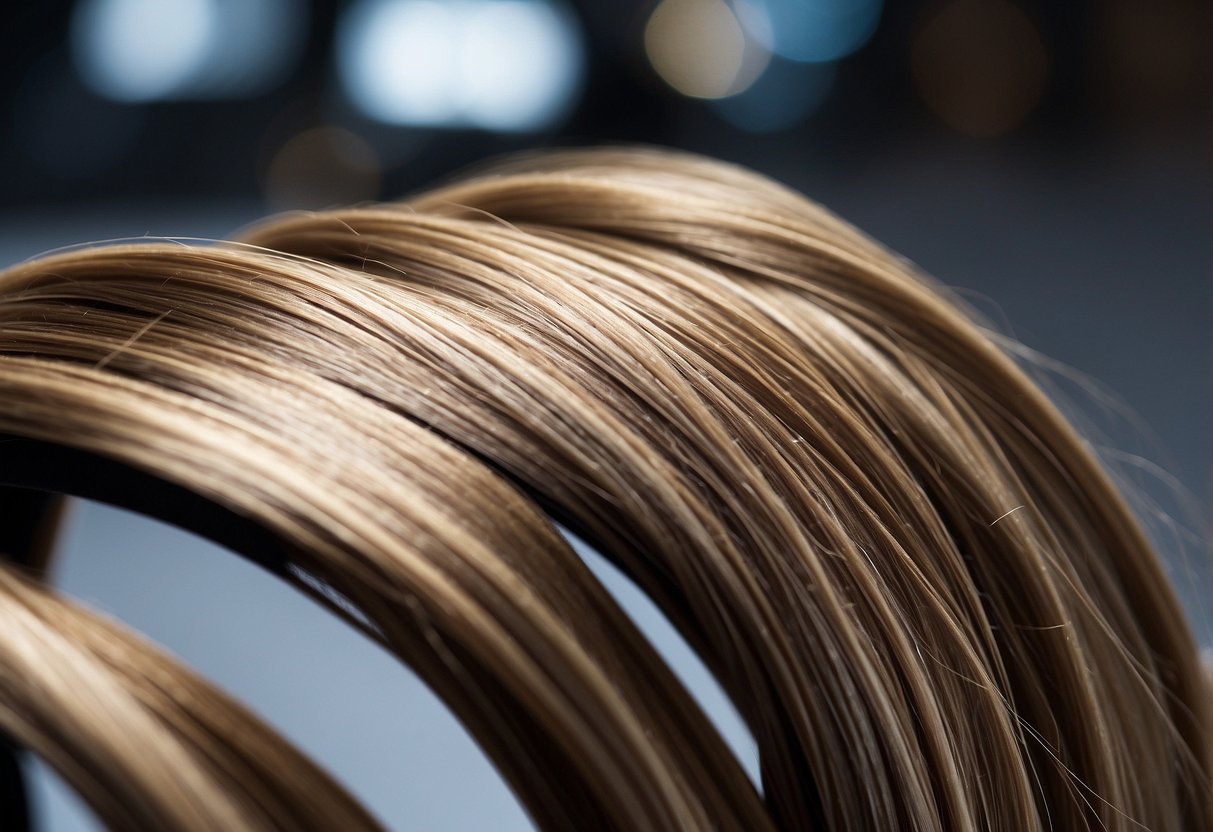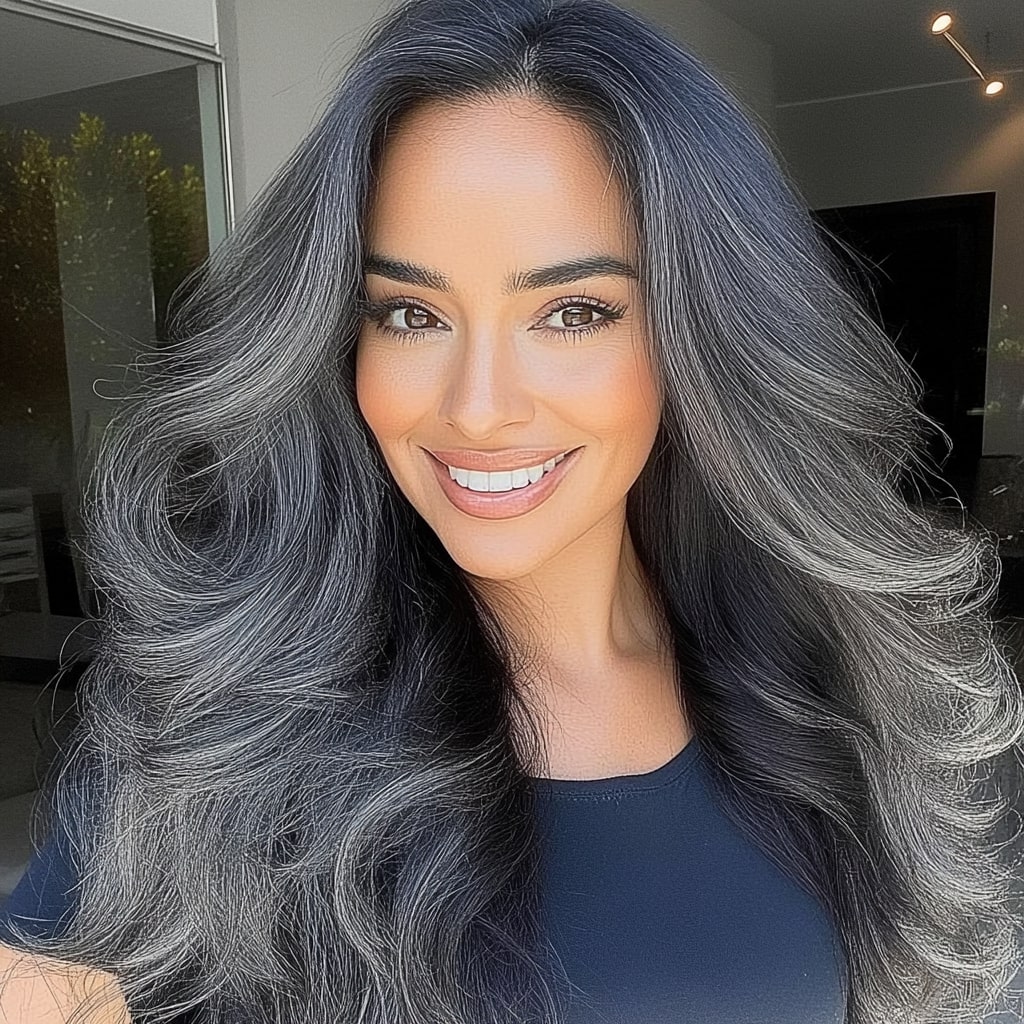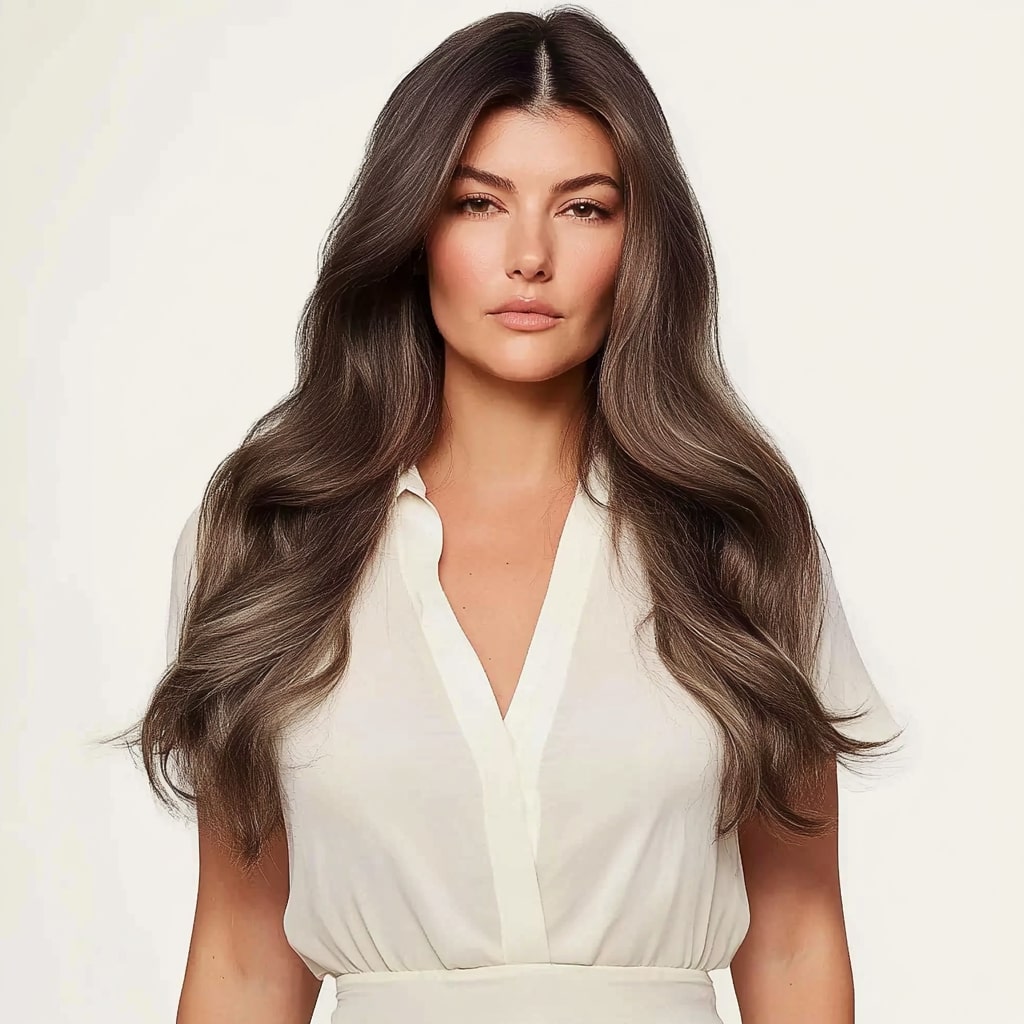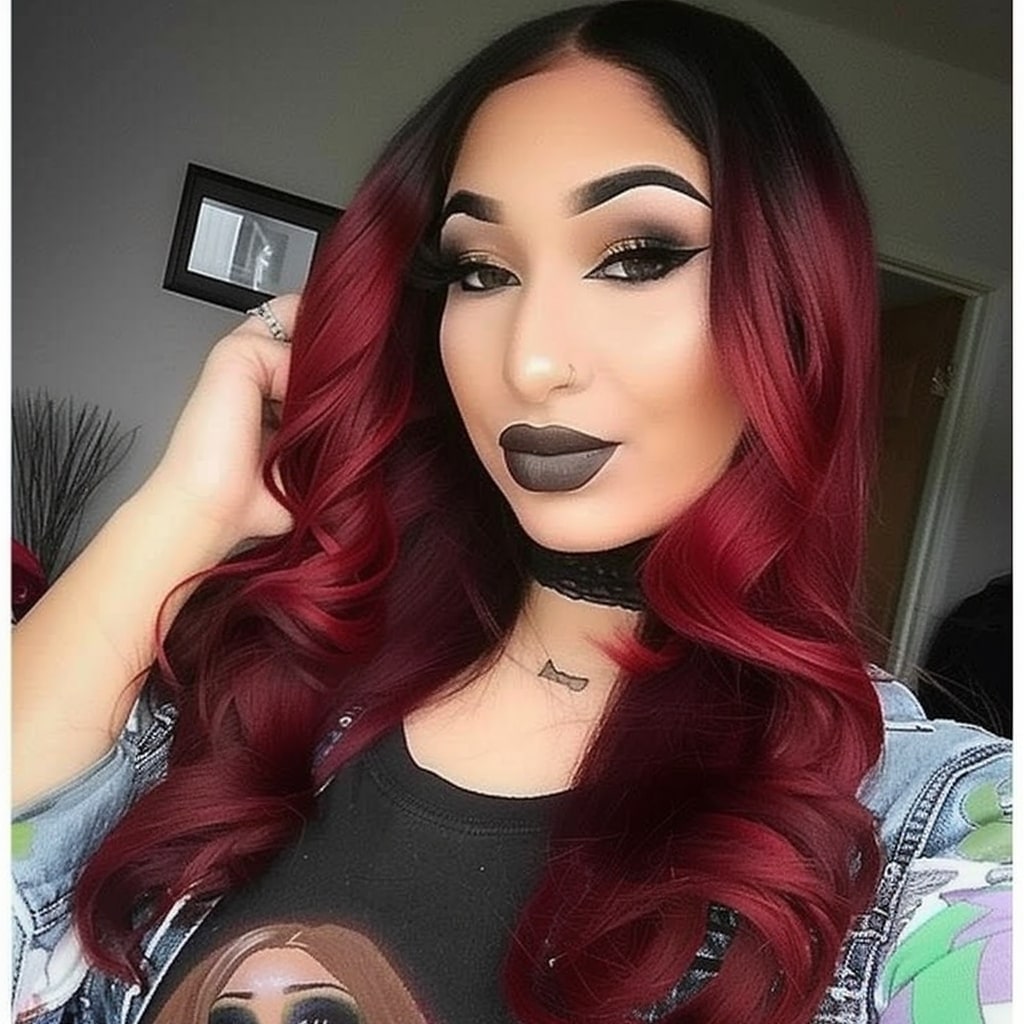Why Are My Tape-In Extensions Visible? Understanding Causes and Finding Solutions

Noticing that your tape-in extensions are more visible than you'd prefer can be frustrating. This common issue can lead to self-conscious feelings, making it important to know the causes and solutions. Identifying why this happens and how to correct it can save you time and enhance the overall appearance of your hair.
One primary cause is improper application. Extensions not installed correctly can easily become visible. Additionally, not following proper aftercare routines can result in tapes slipping or showing. Choosing high-quality extensions and maintaining them well also significantly affects their visibility. With the right approach, your extensions can look flawless and natural.
Key Takeaways
- Improper application can cause extensions to show.
- Proper aftercare is essential for concealing extensions.
- High-quality tape-ins blend better and remain hidden.
Comprehending Tape-In Hair Extensions
Types of Hair Extensions
Hair extensions come in various forms, including clip-ins, sew-ins, and tape-ins. Tape-in extensions use thin adhesive strips to attach to natural hair. While clip-ins can be removed daily, tape-ins offer a semi-permanent solution that can last up to eight weeks with proper care. The delicate adhesive strips of tape-ins make them less noticeable and more comfortable compared to thicker extensions. The quality of the tape varies across brands, with high-quality tapes being more durable and less visible.
Advantages of Tape-In Extensions
One of the primary benefits of tape-in extensions is their natural look. The thin adhesive strips lay flat against the scalp, blending seamlessly with natural hair. The application process is quick and straightforward, usually taking between 30 and 60 minutes, unlike other methods that require hours. Another advantage is that tape-in extensions can be reused, making them a more economical choice over time. Plus, they cause minimal damage to natural hair as they do not involve harsh chemicals or heat during the application process.
Frequent Problems with Tape Extensions
Despite their benefits, tape-in extensions can face some issues. A common problem is tapes becoming visible, often because of insufficient hair covering the tape or overly thick sections that the adhesive cannot hold properly. Another frequent issue is the extensions slipping or falling out, which could be due to poor application, low-quality tape, or an oily scalp. Ensuring the hair is clean and dry before application is essential. Tape-ins might also become tangled or frizzy. Regular maintenance, like gentle brushing and using appropriate hair products, can help maintain their condition. Washing and drying should be done carefully to avoid damaging both the extensions and the natural hair.
| Types of Hair Extensions | Attributes |
|---|---|
| Tape-In Extensions | Use adhesive strips, semi-permanent, up to 8 weeks, less noticeable |
| Clip-In Extensions | Removable daily, thicker, not semi-permanent |
| Sew-In Extensions | Stitched into hair, more permanent, can be more noticeable |
- Tape-in extensions provide a natural look, quick application, and less damage.
- Ensure clean and dry hair for better adhesive grip when applying tape-in extensions.
- Regular maintenance helps avoid tangles and frizzing.
Reasons Why Tape-In Extensions Are Visible
Flawed Installation Technique
Improper application methods frequently cause tape-in extensions to be noticeable. Placing the tape too close to the scalp can create tension and discomfort, making the extensions more apparent. There should be about 1/4 to 1/2 inch of space between the tape and the scalp for a smoother look.
Sections that are either too thin or too thick can also pose visibility issues. Thin sections may not hold the tape well, causing it to slip, while thicker sections may prevent the adhesive from bonding effectively. Testing the placement by pulling the hair back at various angles helps ensure the tape remains hidden.
Factors Related to Natural Hair
The state of your natural hair significantly affects how well the extensions blend. Oily or greasy hair can impair the tape's adhesive properties, making it more likely to slip and become visible. Proper washing and conditioning before installation are crucial.
Fine or thin hair requires special care. Less dense hair necessitates placing the extensions slightly further from the scalp to avoid visible tapes. Additionally, different hair growth rates can impact how well the extensions stay concealed. Regular adjustments are essential to keep them aligned with natural hair growth.
Lagging Maintenance Practices
Neglecting proper maintenance of your tape-in extensions can result in visibility. Using hair products with silicones can deteriorate the tape's adhesive over time, causing it to become loose. It is important to use hair care products that do not contain such ingredients.
Regularly checking and replacing the tape, typically every 6 to 8 weeks, is essential for maintaining the adhesive bond. Ensuring no adhesive residue remains during reapplication is vital, as leftover residue can weaken the new tape's hold on your natural hair. Proper maintenance routines are key to keeping extensions discreet and durable.
Preventative Measures for Concealing Extensions
Accurate Application Methods
Clean partings play a critical role in hiding extensions. Hair and scalp must be clean before starting, as oils and dirt can stop the adhesive from working effectively.
Hair extensions should be applied evenly and with precision. A tail comb is useful for creating straight and clean partings. This ensures the tape lies flat, making it less detectable.
Pressing firmly on the tape secures it better. Applying heat, like with a flat iron, can melt the adhesive slightly, creating a more secure bond.
Selecting the Ideal Extensions
Picking top-quality extensions is important for a natural look. Extensions made from Remy human hair with strong adhesive blend seamlessly and last longer.
Colour matching is essential. Match the extensions to your natural hair colour as closely as possible. Consulting a hair stylist can help find the perfect match, achieving natural dimension and fullness.
Research and selection based on hair type are vital. Lightweight extensions are better for thin hair, while thicker extensions suit denser hair types.
Key Maintenance Practices
Proper maintenance keeps extensions hidden. Use a soft bristle brush to detangle hair daily, starting from the ends to avoid pulling at the tape.
Sleeping with hair in a loose braid or ponytail can minimize tangling and stress on the extensions, enhancing comfort and prevention of issues.
Regularly checking and replacing the tape, typically every 6 to 8 weeks, helps ensure that the extensions stay secure.
Following these measures will maintain a seamless and natural appearance for tape-in extensions.
Aftercare and Maintenance of Tape-In Extensions
Proper Washing Techniques
When washing hair with tape-in extensions, using a gentle touch is crucial. Start by brushing your hair thoroughly to remove any tangles, especially around the extension bonds. This helps prevent matting and damage.
A sulfate-free shampoo is best since it avoids weakening the adhesive. Apply the shampoo to the scalp, massaging gently, and let the suds clean the extensions. Avoid scrubbing the tape area directly. Rinse thoroughly with lukewarm water.
When conditioning, apply conditioner from mid-shaft to ends to avoid the tape area, which can cause slippage. Use cool water to rinse, as it helps seal the hair cuticles.
Pat hair dry with a towel rather than rubbing it. Vigorous towel drying can cause friction and potential damage to the extensions.
Safe Products to Use
Choosing the right products is essential to keep tape-in extensions secure and in good condition. Prefer sulfate-free and silicone-free shampoos and conditioners. These products are mild and less likely to degrade the adhesive tape.
Always use heat protectant sprays before any heat styling to avoid damage. Opt for hair oils free from alcohol and heavy silicones for hydration without compromising the tape.
Hair sprays, mousses, and gels should be used sparingly and kept away from the tape area. Reading product labels ensures they’re safe for extensions.
Regular Maintenance Schedule
Regular maintenance is key to keeping tape-in extensions looking their best. Extensions should be repositioned or re-taped every 6-8 weeks to maintain their appearance and health.
Professional maintenance by a stylist is advisable. They will check the tape bonds, ensure even distribution, and address any slippage or tangling. Avoid DIY maintenance unless experienced.
Daily, brush your extensions gently with a loop brush or wide-tooth comb to prevent tangling. Secure hair in a loose braid or ponytail when sleeping or exercising to reduce friction and prevent sweat buildup, which can weaken the adhesive.
Consistent care ensures that tape-in extensions remain beautiful and last longer.
Solving Regular Issues
Handling Slippage and Falling Out
Slipping and extensions falling out can reveal tape-in extensions. Ensure your hair is clean and oil-free before applying extensions to keep them secure. Oils weaken the adhesive, causing slippage.
Tips to avoid slippage:
- Avoid conditioner near the roots.
- Ensure hair is completely dry before using tape.
- Use high-quality extension-specific tape.
Re-taping every 6-8 weeks helps keep the bond strong. Firmly press and hold the tape for at least 10 seconds to properly activate the adhesive.
Fixing Visibility and Comfort Issues
Extensions showing could be due to incorrect placement. Install them an inch away from the hairline to keep them hidden.
Proper placement tips:
- Leave ¼ to ½ inch space from your scalp when applying tape to reduce tension and pain.
- For finer or thinner hair, maintain more distance for better concealment.
Check how your hair looks when pulled back to ensure the tape is not visible from any angle. Proper camouflage can improve both comfort and confidence.
Repairing Natural Hair Damage
Improper installation or care can cause damage or breakage to natural hair. Gentle handling is crucial for both extensions and natural hair.
Preventative measures:
- Use soft brushes designed for extensions to avoid tugging.
- Avoid heavy styling products that weaken the tape.
If natural hair gets damaged or breaks, let it recover before reapplying extensions. Using high-quality extension tape also helps minimize damage risks and keeps your natural hair healthy.
Expert Hair Extension Services
Consulting with a Skilled Hair Stylist
Choosing a hairstylist with extensive tape-in extension experience is crucial for flawless results. Such professionals understand the nuances of various high-quality tapes suited for different hair types. Their informed guidance ensures the extensions align perfectly, creating a natural look.
Skilled stylists are adept at managing diverse hair textures, thus preventing extensions from being noticeable. They also provide valuable tips for daily upkeep. For instance, using a wide-tooth comb and avoiding extreme heat can help maintain the extensions' durability.
Refitting or Replacing Extensions
Tape-in extensions typically need attention every 6 to 8 weeks, depending on how fast your hair grows and the strength of the tape bond. Signs like slipping or visible tape indicate the need for a professional check-up. Refitting at regular intervals preserves the extensions' concealed and natural appearance.
As the adhesive's grip diminishes over time, replacing the tape becomes necessary. Routine maintenance ensures hair extensions remain discreet and attractive, preserving their seamless integration with natural hair.
Professional Salon Services for Extensions
Salons offer multiple services to keep extensions in top shape. These include retaping and repositioning, which are essential for maintaining a flawless blend and longevity. Expert services help prevent common problems like slippage and exposure.
In addition to physical maintenance, salons provide specialized treatments for human hair extensions. These treatments utilize appropriate products that sustain the extensions' shine and softness. Stylists can recommend the best products and treatments, ensuring the extensions receive premier care.
Regular salon visits benefit the overall look and durability of the extensions. Outstanding customer service from professionals ensures any issues are addressed promptly. This proactive approach maintains the charm and lifespan of the extensions.
Frequently Asked Questions
How to Hide Tape-In Extensions in Thin Hair
For thin hair, it's important to place the tape-in extensions higher on the scalp and distribute them evenly. Layered haircuts can assist in blending the extensions naturally with the rest of the hair, helping to make them less noticeable.
Best Methods for Concealing Tape-In Extensions in Updos
When styling an updo, place extensions away from areas of tension and loosely braid the hair to cover them. Using hairpins and accessories can help hide the extensions and add extra security.
Reasons Tape-In Extensions Are Sometimes Visible on the Sides
Extensions may be visible on the sides if placed too close to the hairline or positioned unevenly. Proper spacing and placement behind the hairline can minimize this issue.
Steps to Prevent Tape-In Extensions from Slipping
Avoid applying oily or silicone-based products directly on the extensions. Make sure the adhesive is securely sealed during application and dry the hair thoroughly after washing to prevent slipping.
Tips for Making Tape-In Extensions Less Noticeable in Short Hair
In short hair, positioning the extensions at an angle can improve blending. Select extensions that closely match the natural hair colour and texture. Layering and thoughtful styling can help conceal the extensions further.
Common Reasons for Tape-In Extensions to Stick Out
Tape-in extensions may stick out if the hair is too thin or if they are installed incorrectly. Ensure they are not placed too close to the scalp and avoid excessive tension. Regular maintenance and adjustments can help keep extensions in place.
Frequently Asked Questions
How can the visibility of tape-in extensions at the sides be prevented?
One common issue is the exposure of tape from the extensions when hair is pulled back. To avoid this, it is crucial to keep the extensions at least 1 inch away from the hairline. This spacing ensures that enough natural hair covers the tapes, making them less likely to be seen.
What are effective methods to hide tape-in extensions in thin hair?
For those with thin hair, concealing extensions can be challenging. To make the extensions blend seamlessly:
- Layer the hair: Adding layers can create a more natural look.
- Use root touch-up sprays: These sprays can help blend the hair root with extensions.
- Backcombing and teasing: These techniques can add volume at the roots, helping to hide the tapes.
Can tape-in extensions harm fine hair?
When applied and maintained correctly, tape-in extensions should not damage fine hair. It's essential to use high-quality, 100 percent human hair extensions and follow proper application guidelines. Improper use or low-quality products may lead to breakage and hair loss.
What are the typical disadvantages of tape-in hair extensions?
While tape-in extensions have many benefits, they also come with drawbacks:
- Maintenance: They require regular upkeep, such as repositioning every 6-8 weeks.
- Exposure: The tapes may show if not placed properly.
- Cost: High-quality extensions can be expensive.
- Sensitivity: Some people might have allergic reactions to adhesives.
How long do tape-in extensions generally last?
Tape-in extensions can last between 6 to 8 weeks with proper care and maintenance. After this period, they need to be repositioned to account for hair growth. High-quality extensions may be reusable for up to a year if cared for correctly.
What techniques can help make hair extensions less visible?
To make hair extensions blend more naturally:
- Choose the right colour match: Extensions should closely match the natural hair colour.
- Proper placement: Following proper spacing and placement guidelines ensures the extensions are hidden.
- Use quality products: Investing in high-quality extensions reduces the risk of exposure and ensures a more natural appearance.
- Styling: Curling or styling both the extensions and natural hair together can help them blend seamlessly.

 My Store Credit
My Store Credit
 Buy Again
Buy Again






